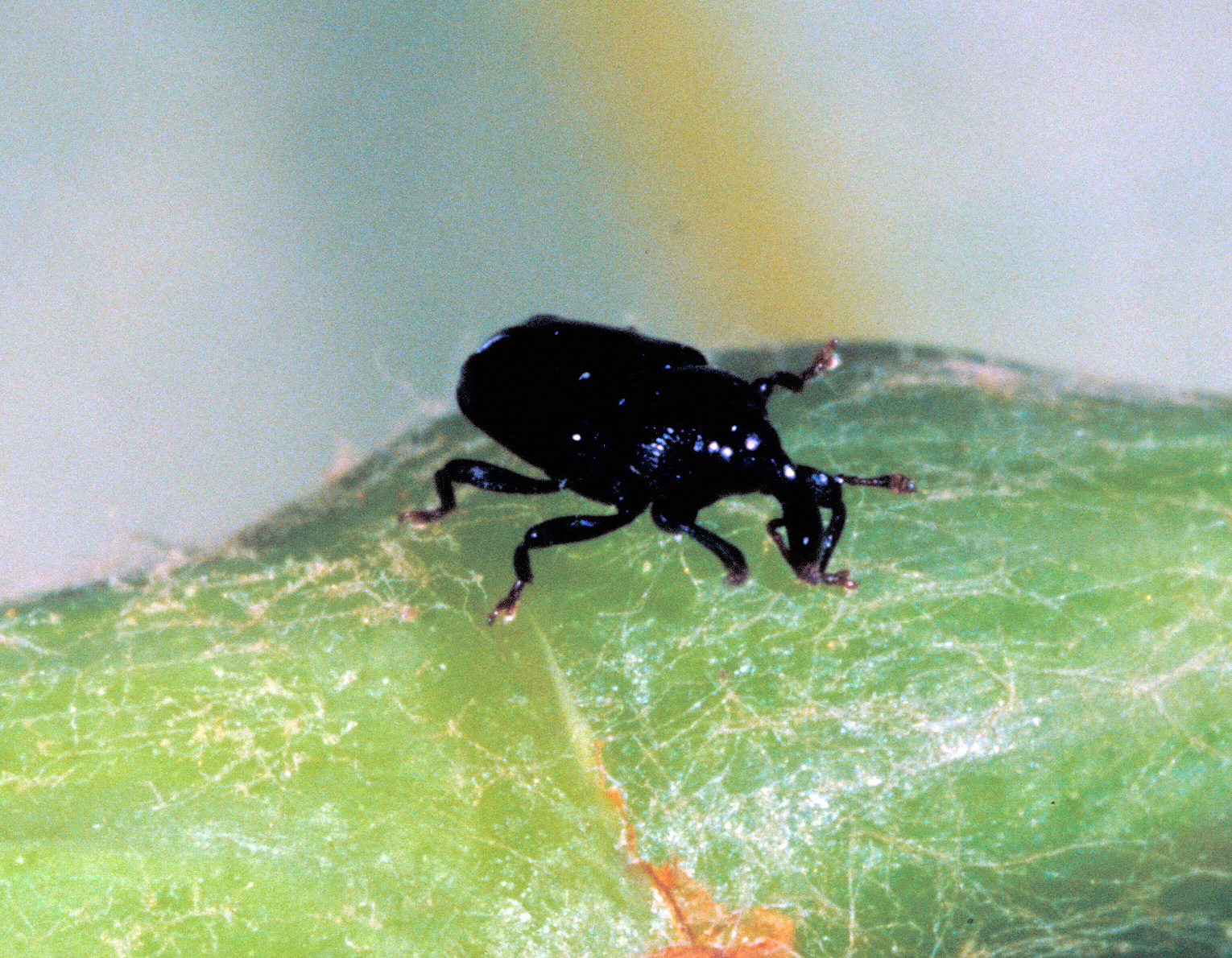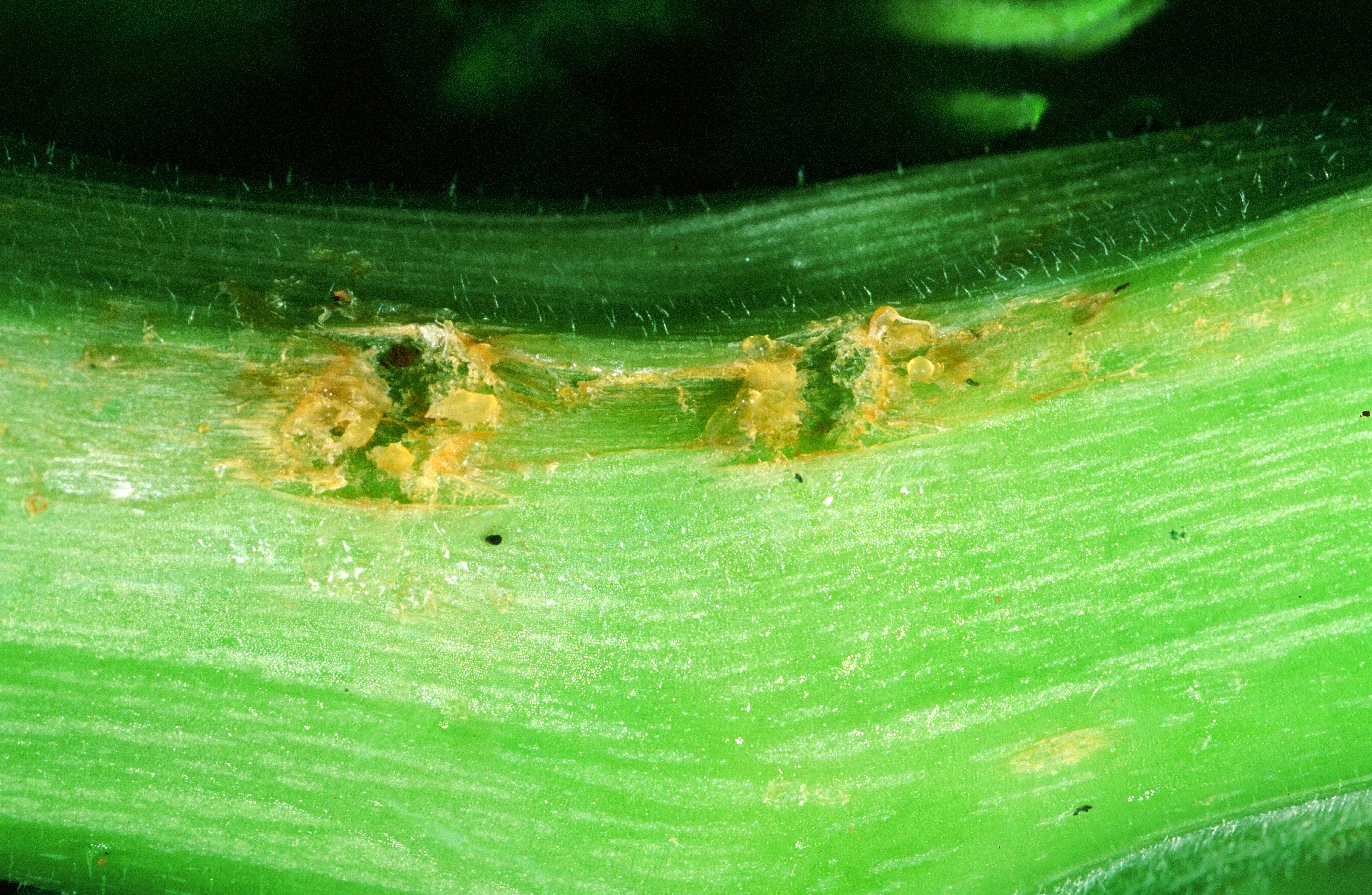Grape Cane Gallmaker on Grapes
Return to Insect Pests
Grape cane gallmaker (Ampeloglypter sesostris) is a 1⁄8-inch common weevil that is present throughout the eastern U.S. in May and June. The female lays an egg in one of a series of holes she chews along the cane just above a node when canes are 10 to 20 inches long. This results in the development of 1-inch-long galllike swellings on shoots; galls reach twice the diameter of a cane and may be discolored. Galls rarely reduce plant vigor or yield but can make vines more susceptible to breakage. Adults are active in late May and overwinter in debris on the ground. One generation occurs per year.

Grape gallmaker adult.
(Photo: Ric Bessin, University of Kentucky)

Grape gallmaker eggs are laid in small holes above node.
(Photo: Ric Bessin, University of Kentucky)

Grape gallmaker egg holes cause injury.
(Photo: John Strang, University of Kentucky)

Grape gallmaker egg holes result in gall formation.
(Photo: Ric Bessin, University of Kentucky)
Management:
- Prune and destroy galled shoots during summer.
- Apply late-spring insecticide sprays when infestations are heavy (scouting).
- While the galls are commonly found in most vineyards, they rarely cause economic losses.
